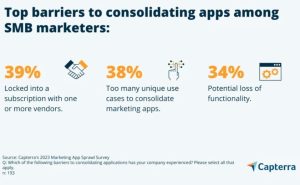— September 26, 2018

geralt / Pixabay
Developing any high-performance sales team starts with talent. If you have the wrong people, no tools, processes, programs, training in the world will make up for it.
Yet, too often, managers treat this issue too cavalierly. I constantly see:
- Sloppy approaches to recruiting, relying more on “chemistry,” and out of date job descriptions, rather than having a rich competency model for the “ideal candidate.”
- Rushing to fill vacant positions, rather than taking the time to find the right person.
- Failing to put strong onboarding programs in place–and focusing those programs exclusively on product training.
- Creating a high churn organization, either through treating people as commodities, if they miss this month’s numbers, they are out, replaced by the next victim. Alternatively, creating a workplace environment where people don’t feel valued, causing them to leave voluntarily.
- Not addressing performance issues. First not setting clear performance expectations, then coaching and developing people, then addressing poor performers on a timely basis.
- Believing the implementation of technology can offset talent deficiencies.
Nothing else that sales managers do matters if they don’t have the right people. The manager’s job is much easier with the right people on board. Yet too, often, managers spend more time in other areas than in working with their people.
I’ve made the case in a number of prior posts, that each hiring/people decision is a multimillion-dollar investment. If we look at any other multimillion-dollar investment, for example, a new sales automation tool, many people are involved, the team goes through a thoughtful buying process, and carefully chooses the solution they believe will product the best results.
But people decisions don’t seem to get the “multimillion-dollar” treatment. In fact, the behavior we see looks insane. Consider:
- Average attrition (voluntary and involuntary) is 15.7%* (For every 20 salespeople, you will have to replace 3 due to attrition.)
- Combined hiring and onboarding time is 12.9 months*. Roughly 3.7 months in recruiting, 9.2 in onboarding.
- Average time in the job is 22 months*. Stated differently, you have to “make your money” off each salesperson in 13 months.
What’s this mean?
Let’s assume a salesperson is expected to produce $ 2M per year. For that year the position is open and the person is ramping up, customers are going someplace else–to your competition. You are losing close to $ 2M until these people get to full productivity. You don’t only lose this short-term business, but you have lost a customer that you have to win back in the future.
In just the recruiting and onboarding period, you are already close to $ 2M in the hole.
But your salesperson is likely to leave within another 10 months. To “break even” with this hire, they have to make their current year number, roughly $ 2M, but also that year of lost opportunity, another $ 2M. But how likely is it they will cover that (meaning they need to hit close to 200% of goal)? If they were around a little longer, perhaps we could expect some recovery, over several years, but they are already gone and we’ve started the whole cycle again.
Is it any wonder why sales performance continues to decline? Is it any wonder that fewer than 55% of people are meeting their goals?
If we are going to “fix” sales performance, we have to first focus on talent.
Talent matters! It always has.
* Data from various recent CSO Insights Surveys.
Business & Finance Articles on Business 2 Community
(63)









